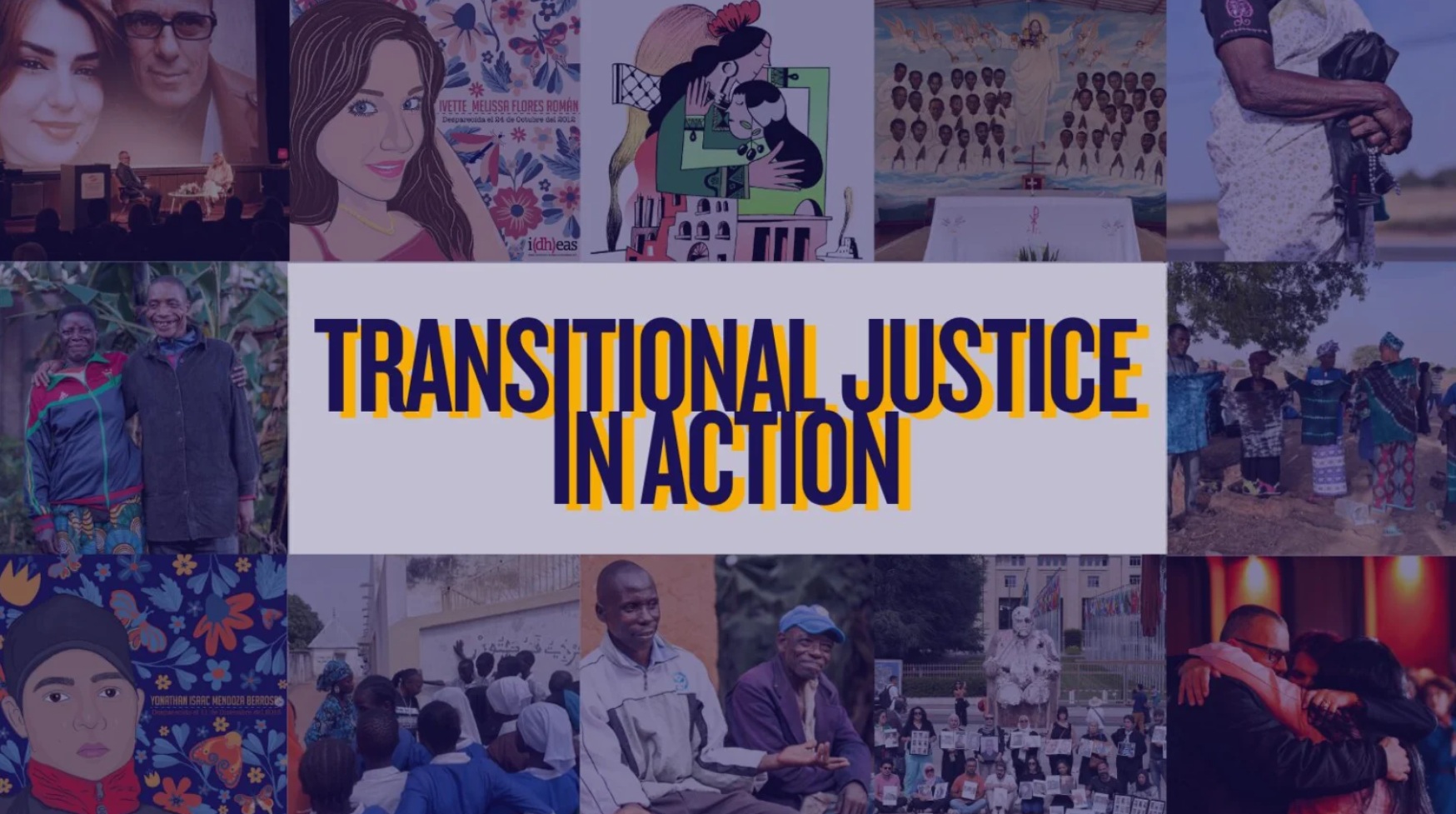Transitional justice efforts around the world – Civil Rights Defenders

Report on Transitional Justice Initiatives and Their Contribution to the Sustainable Development Goals
Introduction: A Decadal Review of EU Policy
A decade following the establishment of the European Union’s Transitional Justice Policy, this report assesses the progress made in combating impunity and securing justice for victims of human rights violations. Drawing upon the “Transitional Justice in Action” booklet, a collaborative project by Civil Rights Defenders and Impunity Watch under the Global Initiative Against Impunity (GIAI), this analysis evaluates the effectiveness of grassroots transitional justice initiatives. The report places significant emphasis on how these efforts align with and contribute to the United Nations’ Sustainable Development Goals (SDGs), particularly SDG 16 (Peace, Justice and Strong Institutions).
The core objectives of the initiatives under review are to:
- Combat impunity for human rights violations.
- Provide redress and support for victims and survivors.
- Prevent the recurrence of mass atrocities.
- Strengthen the rule of law and build trust in institutions, directly supporting SDG 16.
Regional Analysis: Grassroots Efforts in Advancing the 2030 Agenda
The report examines case studies from five global regions, highlighting the direct impact of local organizations on specific SDGs.
-
Africa: Upholding SDG 5 and SDG 16 in Sudan
In the conflict-ridden environment of Sudan, where millions are displaced and lack basic necessities, the work of Sudanese Women Rights Action (SUWRA) is critical. The organization’s documentation of human rights violations directly serves the targets of SDG 16 by creating a basis for accountability. SUWRA’s specific focus on documenting cases of conflict-related sexual violence and threats against women activists makes a vital contribution to SDG 5 (Gender Equality) by seeking to end all forms of violence against women and girls.
- Documented over 570 civilian deaths and more than 340 cases of sexual violence.
- Lobbied international bodies, including the OHCHR and the International Criminal Court, to promote justice and accountability (SDG 16.3).
-
Asia: Promoting SDG 10 and SDG 16 in Sri Lanka
The Adayaalam Centre for Policy Research in Sri Lanka works with Tamil families affected by forced disappearances during the nation’s civil war. By providing training to human rights defenders and victims’ families, the organization empowers a marginalized community, advancing SDG 10 (Reduced Inequalities). This empowerment enables families to engage more effectively with state mechanisms like the Human Rights Commission and legal processes such as the exhumation of mass graves, thereby promoting SDG 16.3 (Ensure equal access to justice for all).
-
Latin America: Addressing Intergenerational Trauma in line with SDG 3
A regional conference involving participants from Guatemala, Mexico, and Honduras highlighted the transgenerational impact of human rights abuses. The testimony of activists like Alejandra Díaz of the Buscadoras Guanajuato collective underscores the severe psychological and physical health consequences for families of the disappeared. This struggle directly relates to SDG 3 (Good Health and Well-being), as prolonged stress and grief lead to depression, anxiety, and physical ailments. The lack of accessible and specialized psychosocial care within public health systems represents a significant gap in achieving SDG 3.4 (Promote mental health and well-being).
Systemic Challenges to Achieving Justice and the SDGs
Despite the significant contributions of these organizations, persistent obstacles hinder progress towards justice and the broader 2030 Agenda.
- Erosion of Legal Norms: The disregard for international law in many states weakens institutions and erodes public trust, directly undermining the foundation of SDG 16.
- Lack of Institutional Trust: When victims’ voices are unheard and disinformation is prevalent, grievances worsen, preventing the peaceful and inclusive societies envisioned in SDG 16.
- Chronic Underfunding: Accountability and justice work is consistently underfunded, which stalls progress and allows the root causes of conflict and human rights abuses to remain unaddressed.
- Cycle of Violence: The failure to address root causes ensures that cycles of violence continue, making sustainable development and lasting peace unattainable.
Overcoming these challenges is essential for the advancement of the Sustainable Development Goals. The “Transitional Justice in Action” booklet provides further recommendations for the EU to enhance its support for these crucial initiatives, thereby strengthening its commitment to global peace, justice, and sustainable development.
Analysis of Sustainable Development Goals in the Article
1. Which SDGs are addressed or connected to the issues highlighted in the article?
- SDG 16: Peace, Justice and Strong Institutions: This is the central theme of the article. The text focuses on transitional justice, fighting impunity, documenting human rights violations (civilian deaths, detentions, forced disappearances), holding perpetrators accountable through bodies like the International Criminal Court, and the erosion of public trust in justice institutions.
- SDG 5: Gender Equality: The article explicitly mentions the disproportionate impact of conflict on women. It highlights that women and girls in Sudan are at high risk of sexual violence, notes threats against women activists, and describes the work of “searching mothers” (madres buscadoras) in Latin America, showcasing the gendered nature of seeking justice for disappeared relatives.
- SDG 3: Good Health and Well-being: The article addresses the health consequences of human rights violations. It describes the “transgenerational impact” of violence in Latin America, leading to psychological trauma such as depression and anxiety, as well as physical ailments. It also points out the lack of access to specialized psychosocial care for affected families.
2. What specific targets under those SDGs can be identified based on the article’s content?
-
Target 16.1: Significantly reduce all forms of violence and related death rates everywhere.
- The article directly relates to this target by discussing efforts to document “570 civilian deaths” in Sudan and addressing the issue of “forcibly disappeared” relatives in Sri Lanka and Latin America, which are extreme forms of violence.
-
Target 16.3: Promote the rule of law at the national and international levels and ensure equal access to justice for all.
- This target is addressed through the article’s focus on fighting impunity, lobbying the UN and the International Criminal Court to “hold perpetrators accountable,” and empowering families in Sri Lanka to “engage more strategically with the exhumation process.” The mention of “failed court hearing or police refusal to investigate” highlights the barriers to accessing justice.
-
Target 5.2: Eliminate all forms of violence against all women and girls in the public and private spheres.
- The documentation of “more than 340 cases of conflict-related sexual violence” against women and girls in Sudan is a direct link to this target. The article also mentions “70+ detentions and threats against women, activists, and aid workers,” which constitutes another form of violence and intimidation.
-
Target 3.4: Promote mental health and well-being.
- The article connects to this target by describing how prolonged stress and grief from human rights violations lead to “depression, anxiety, and even physical ailments.” It further highlights the challenge that “public health systems rarely offer specialised psychosocial care,” indicating a failure to promote mental health for victims of violence.
3. Are there any indicators mentioned or implied in the article that can be used to measure progress towards the identified targets?
- Yes, the article mentions several specific and implied indicators:
-
Quantitative Indicators: The work of Sudanese Women Rights Action provides concrete numbers that can be used as indicators to measure the scale of violence.
- Number of conflict-related deaths: “570 civilian deaths.” (Relevant to Target 16.1)
- Prevalence of sexual violence: “more than 340 cases of conflict-related sexual violence.” (Relevant to Target 5.2)
- Number of arbitrary detentions and threats: “70+ detentions and threats against women, activists, and aid workers.” (Relevant to Targets 16.3 and 5.2)
- Number of displaced persons: “10.5 million people” displaced by civil war in Sudan. (Contextual indicator for peace and security)
-
Qualitative and Implied Indicators: The article implies other ways to measure progress.
- Access to Justice Mechanisms: The lobbying of the UN and the International Criminal Court, and the engagement of families with the exhumation process at a mass grave site, serve as indicators of efforts to access justice. (Relevant to Target 16.3)
- Prevalence of Mental Health Issues: The mention of “depression, anxiety, and even physical ailments” among families of the disappeared is an indicator of the health impact of violence. (Relevant to Target 3.4)
- Availability of Healthcare Services: The statement that families “struggle to access therapy, and public health systems rarely offer specialised psychosocial care” is an indicator of gaps in health services for victims. (Relevant to Target 3.4)
- Public Trust in Institutions: The observation that “justice is being eroded and international legal norms are disregarded. This diminishes people’s trust in institutions” points to public perception as a key indicator of institutional strength. (Relevant to SDG 16)
4. Table of SDGs, Targets, and Indicators
| SDGs | Targets | Indicators Identified in the Article |
|---|---|---|
| SDG 16: Peace, Justice and Strong Institutions | 16.1: Reduce all forms of violence and related death rates. |
|
| SDG 16: Peace, Justice and Strong Institutions | 16.3: Promote the rule of law and ensure equal access to justice. |
|
| SDG 5: Gender Equality | 5.2: Eliminate all forms of violence against all women and girls. |
|
| SDG 3: Good Health and Well-being | 3.4: Promote mental health and well-being. |
|
Source: crd.org
What is Your Reaction?
 Like
0
Like
0
 Dislike
0
Dislike
0
 Love
0
Love
0
 Funny
0
Funny
0
 Angry
0
Angry
0
 Sad
0
Sad
0
 Wow
0
Wow
0



















































.jpg.webp?itok=0ZsAnae9#)


























